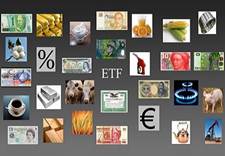Why Subscribe? — 8 Compelling Reasons
 1. “Big Data” Solution 1. “Big Data” Solution
RealVol Indices (1,600 in total) cover 40 systemic global assets encompassing 40 vital aspects of risk. Never before have there been such 360-degree views of risk on the world’s key global assets.
 2. Coverage of Systemic Global Assets 2. Coverage of Systemic Global Assets
Index companies disseminate equity indices almost exclusively. Most do not produce measures of risk. Those that do, calculate only realized volatility, and do so on only their proprietary products. RealVol is the first company to measure risk on key global assets. Note that additional assets are expected to be added over time.
 3. Risk Viewed from 40 Different Angles 3. Risk Viewed from 40 Different Angles
Although many have tried, risk is too complex to be summarized in one number. RealVol has solved this conundrum with the creation of 40 indices for each asset. Those 40 indices are broken down into six time frames, five formulas, and two models.
4. Six time frames
The six time frames of RealVol Indices correspond to the investment horizon of nearly every investor or trader.
 5. Five Formulas (historical) 5. Five Formulas (historical)
Five formulas provide historical reviews of ranges, averages, and trends. They include the following:
- Realized volatility
- Realized volatility of realized volatility
- Overnight/intraday realized volatility
- Correlation between an underlying asset’s price and its own realized volatility
- Realized variance
 6. Two Models (forecast) 6. Two Models (forecast)
Two models attempt to forecast realized volatility over a variety of time frames, symbols HVOL and RVOL. The two models have assessed future risk more accurately than the market’s forecast (based on implied volatility) — even after the latter was adjusted for the risk premium. Our preliminary results also show these models to be more accurate than the industry-standard GARCH models.
7. Adjustments to Remove Phantom Volatility
Phantom volatility, caused not by economic changes but because of structural price changes, must be removed. The team at RealVol adjusts the underlying data to eliminate phantom volatility that causes most other calculations to fail. The adjustments include:
- Rolling based on same-expiration returns between expiring futures contracts
- Rolling prior to the delivery month on deliverable commodities
- Removing the effect of dividends if the underlying asset is a security
- Adjusting for corporate events such as stock splits if the underlying asset is a security
- Converting to rates if the underlying asset is a short-term interest rate product
- Converting to a normal distribution instead of a lognormal distribution when interest-rate products are priced under 1% to eliminate the potential of an undefined result when dividing by an interest rate of zero.
- Accounting for market disruption events
- Using surrogate markets when data is unavailable
 8. Proper Formulas Using Clean Data 8. Proper Formulas Using Clean Data
It is not proper to use the customary version of the standard deviation formula to calculate volatility in the markets. Many vendors use the incorrect formula. RealVol incorporates the proper daily realized volatility calculation used by sophisticated market practitioners. Many market data sources have errors. Even data gathered directly from exchanges has errors. The technical team at RealVol cleans the data prior to its release.
|
|
|
©
Copyright 2010-2021 RealVol LLC. All rights reserved
• Site Map
|
|

